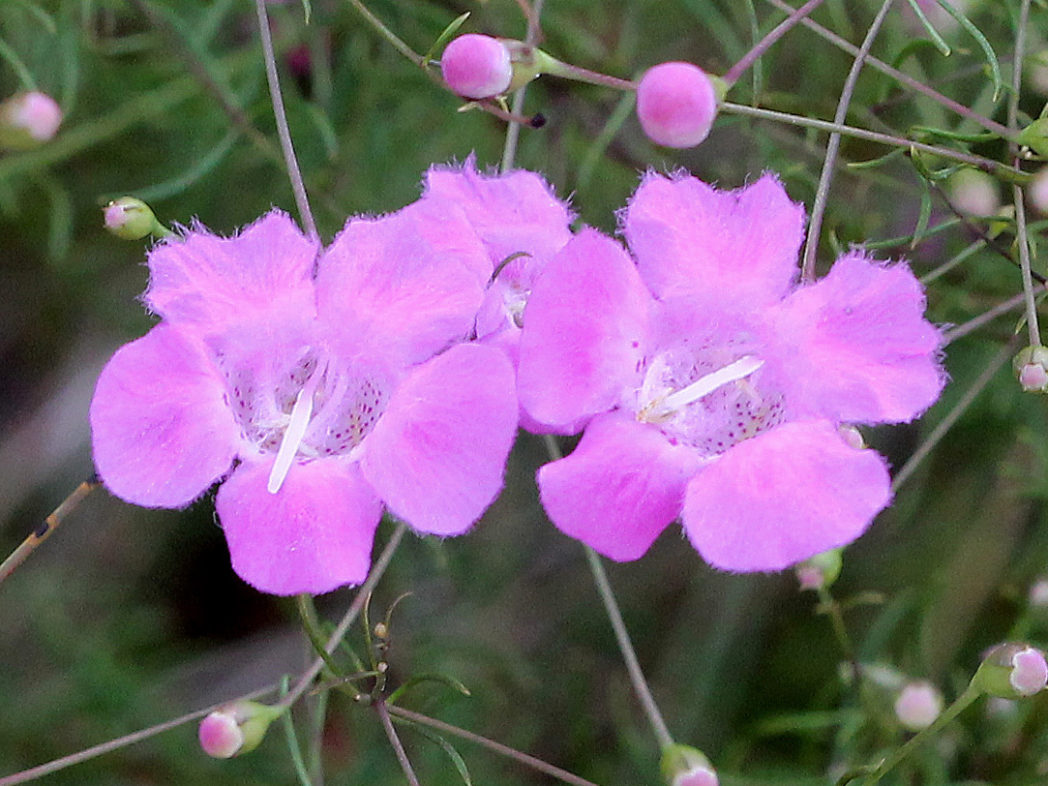False foxglove
Pictured above: Seminole false foxglove (Agalinis filifolia) by Mary Keim. Click on terms for botanical definitions. View post as a PDF.
Seminole false foxglove (Agalinis filifolia) is an annual herbaceous wildflower. Its showy pink blooms are bell-shaped and have white throats with pink spots. Corollas are five-lobed with fringed edges. Calyces are also five-lobed and can be green to reddish. Leaves are small, sessile and needlelike. Stems are thin, wiry, and may be reddish in color. Seeds are born in capsules.
There are 17 species of Agalinis native to Florida, many of which are similar in appearance and hard to differentiate. In most cases, the habitat will provide clues to identification. Seminole false foxglove occurs naturally in sandhills, flatwoods, coastal scrub and xeric woodlands. It blooms in the fall and attracts many pollinators, including bees and butterflies. It is also the larval host plant for the common buckeye butterfly.
Members of the Orobanchaceae family are parasitic, living on nutrients in the roots of other plants.
Family: Orobanchaceae (Broomrape family)
Native range: Nearly throughout Florida
To see where natural populations of Seminole false foxglove have been vouchered, visit florida.plantatlas.usf.edu/.
Hardiness: Zone 8A–11B
Soil: Sandy, well-drained soils
Growth habit: 3’ tall
Propagation: Seed
Garden tips: This and other Agalinis species are parasites and not easy to grow unless the appropriate hosts are also present. Preserve false foxglove if you are lucky enough to have it growing in your landscape. It can spread via underground rhizomes

